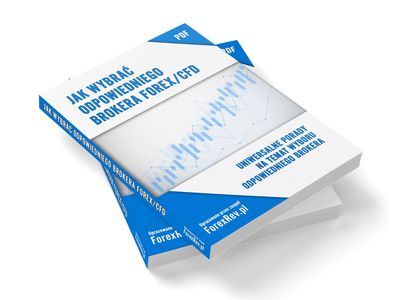MiFID II and ESMA intervention – summary
MiFID II and ESMA’s product intervention have fired up traders, motivating them to speak out on changes to the European Forex/CFD market.
ESMA has now ended its product intervention (as of July 31, 2019). Most local regulators have permanently implemented the intervention provisions into national law. Only the Polish Financial Supervision Authority (KNF) has deviated from these restrictions and expanded the restrictions to include a “Secondary Client” category, allowing leverage of up to 1:100. Learn how to become a Senior Client .
What is MiFID II?
The EU Markets in Financial Instruments Directive II (MiFID II), issued by the European Securities and Markets Authority (ESMA), updates the European regulatory framework for financial markets. The first version of MiFID was created in 2004. Its two main goals are to increase and regulate market competition and to protect clients in European investment services markets. It regulates all entities on the capital market and all financial instruments (except cryptocurrencies). It is accompanied by the Markets in Financial Instruments Regulation (MiFIR), which supports the implementation of the directive into the legal systems of member states. The regulation, in its original form (MiFID I), primarily covered the stock market.
The very rapid development of the industry, the spread of electronic platforms or so-called dark pools (OTC market) instead of public stock exchanges, and the increasing popularity of derivatives and bonds, required an update of the existing regulatory framework.
New rules for brokerage houses
Prices for instruments deemed liquid by ESMA must be published before and after the transaction is completed (pre- and post-). Prices for less liquid instruments must also be published, but a delay is permitted. Furthermore, the most liquid derivatives, such as interest rate swaps, must be traded on public platforms (such as the Warsaw Stock Exchange).
Since the introduction of MiFID II, brokers and brokers are also required to report all transaction data directly to regulators. They must also provide full details of each transaction (e.g., spread, bid/ask, market depth) upon client request . Both measures are designed to prevent market abuse. Best execution policies are also required to demonstrate that the institution is trading assets at the best possible price.
Under the new regulations, all brokers and investment firms must record all transactions concluded, all correspondence with clients and all recordings of telephone conversations for a period of at least 5 years , depending on the national authority (but no shorter).
In addition, each company in the sector will have to employ a separate compliance officer who will be responsible for monitoring compliance with the new legal requirements.
In other words, MIFID II “encourages” honesty and full transparency, especially in the CFD industry, which has often been insufficiently regulated. By design, anything that may have been hidden or kept secret by a broker will finally be revealed.
So what opportunities do traders gain under the new law?
New traders’ rights
- Clients can request a transaction execution report, including the location of the transaction execution – this allows you to easily find out whether your position was executed in the A-Booked system (the broker released it further) or in the B-Booked system (the broker executed it on the internal market [ MM ]).
- Upon request, they can now also access a report on a specific transaction, which must be submitted within 24 hours of the execution of the transaction. This report contains precise information on the factors that make up the transaction price, such as the commission amount, costs, any discount or markup, or even price supplements.
- If your order was executed in several batches, you can request a detailed explanation of the VWAP (Volume Weighted Average Price) of your transaction.
Changes affecting other financial companies
Another important change concerns the costs associated with preparing analyses by financial firms – previously, these were included in brokerage fees and commissions.
Regulations require separate collection of fees for such analyses. This is intended to lead to a situation in which the market mechanism will automatically determine the pricing of reports. This will allow
Asset managers and institutional clients will have the opportunity to purchase high-quality research and analysis tailored to their needs.
A new concept of OTF, i.e. organized trading system, is also being introduced into the market structure – derivative instruments such as CFDs are to be subject to it.
One crucial change is the regulation of salesperson remuneration. The previous version of the directive required clients to complete special questionnaires that were supposed to determine their investment profile and risk appetite (commonly known as KYC) to protect them from investment products that were ill-suited to them. Of course, such questionnaires were usually fictitious. Worse still, in practice, financial advisors typically earn commissions on products sold. This leads to a situation where they steer clients toward products that yield the highest returns—usually those with a higher risk profile.
As a result of the new directive, brokers are prohibited from sharing so-called management fees, a percentage charged for handling client funds, with distributors . These fees range from 1% to 4% of the balance, with distributors receiving up to 70% of this amount. Furthermore, the regulations now guarantee clients access to all details regarding fees, commissions, and incentives for advisors, intermediaries, and product distributors.
ESMA product intervention
The above changes result directly from the MiFID II directive. In order to maximize customer protection under its laws, ESMA has made additional product intervention. So another important fact is the drastic limitation of financial leverage in European jurisdictions for CFDs :
- 30:1 for major currency pairs
- 20:1 for non-major currency pairs, gold and major indices;
- 10:1 for commodities other than gold and non-major stock indices;
- 5:1 for individual stocks and other benchmarks
- 2:1 for cryptocurrencies
It’s worth adding that higher leverage is still available to professional clients (more information at the link) and, in Poland, also to experienced clients (see details) . Furthermore, the European regulator has introduced a complete ban on the sale and distribution of binary options to retail clients in Europe . Other important issues for retail investors include restrictions on investment incentives and the general advertising of financial instruments – these include various types of bonuses and other financial and non-financial benefits. The new regulations significantly limit the marketing capabilities of brokerage houses. This is because overly intrusive actions can encourage clients to invest in complex instruments and lead to the loss of capital due to a lack of appropriate knowledge.
MiFID II regulations will have implications for all entities involved in investing in the EU. This includes non-EU firms operating within the EU. Nevertheless, many traders choose to use brokers outside ESMA’s jurisdiction .




















